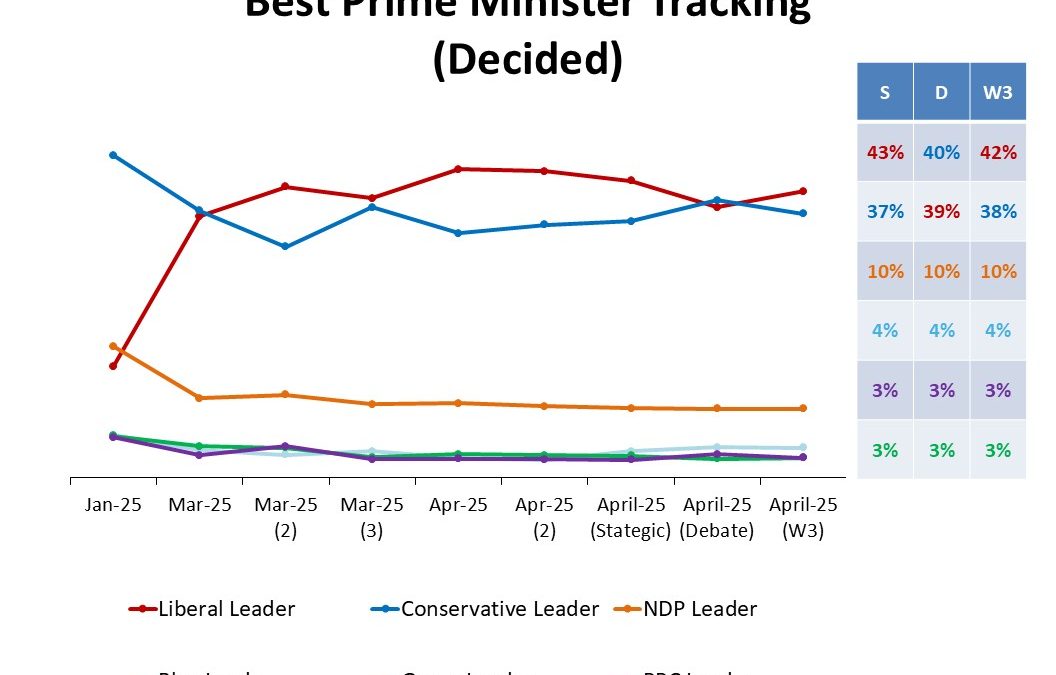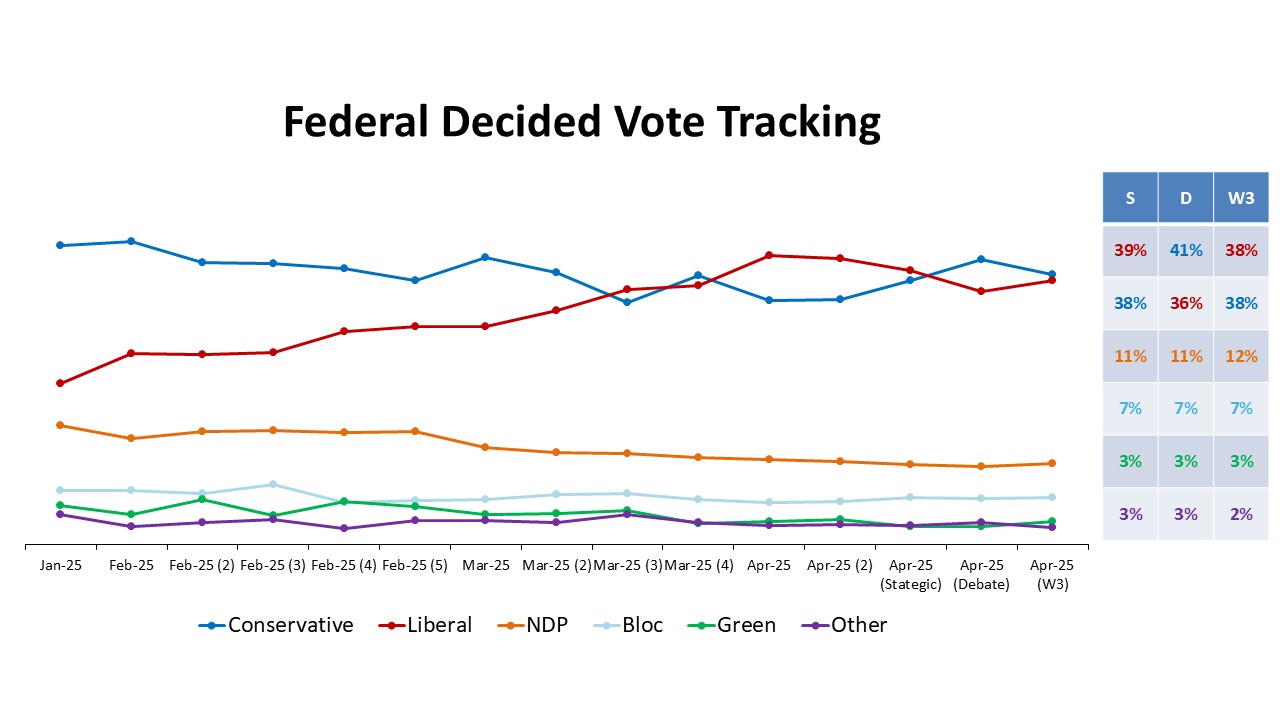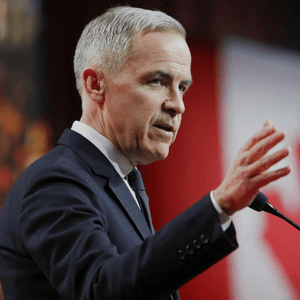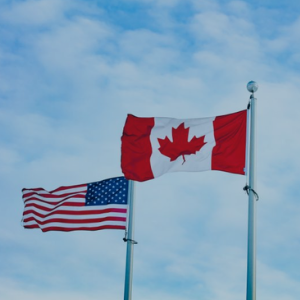
The Liberal lead over the Conservatives fades to a marginal tie as Elections Canada reports 7.3 million ballots cast in Advance Polls.
These are the topline findings of a trio of online surveys sponsored and conducted by Innovative Research Group Inc. (INNOVATIVE). The first fielded April 15-20 with N=2000, the second fielded April 17-20 with N=1000, and the third fielded April 21-23 with N=1200. Results are weighted by age, gender, region, education, and self-reported federal past vote to ensure that the overall sample’s composition reflects that of the actual population according to Census data.
Over the past week INNOVATIVE has had three polls in the field one after the other, with some overlap in field times. What has emerged is that both major parties are clustered around 38/39%. Looking at the three polls in order of time, we found the Liberals at 39%, 36% and 38%, and the CPC at 38%, 41% and 38%.

Some key underlying numbers are very similar across the three surveys. All three studies show near-identical agreement with “it is time for a change in government” (67%/67%/66%) which is slightly higher than the previous week. The Liberals also continue to benefit from a steady plurality agreeing that they are “the best choice to form government despite their flaws” (43%/41%/42%). This is slightly lower than in the previous week. It makes sense to us that as Trump moves off the front burner and the campaign turns to other issues, time for change starts to pay a bigger role.
The Liberals also continue to benefit from the NDP’s underperformance, with their decided vote share stuck at 11-12%. Even though 11-12% is well below the NDP’s recent election results, it is higher than in most other polls. It may be we have a better read on the NDP, or it may be we are over-estimating the NDP and under-estimating the Liberals by a point or two.
We see several other findings that are encouraging for the Conservatives. The post-debate survey clearly stands out as it shows both a Conservative ballot lead and narrow advantage for Poilievre on the ‘best Prime Minister’ question. Ontario has become a marginal tie in all three cases – which opens to the door to very different seat projections than last week’s data. A marginal improvement for the Bloc in Quebec (28% in the latest survey from 27% last week) will also have seat implications if it continues.
In short, across the three polls, we see the race tightening – but close is probably not enough for the Conservatives to reach a winning seat count. Even if they do pull ahead in the next few days, Elections Canada has reported that at least 7.3 million ballots were cast in Advanced polls. That represents a 25% increase over the 5.8 million cast in Advance polls in 2021. Considering that the 2021 election saw 17.2 million ballots cast, this means that a considerable percentage of this year’s total is now “in the bank”.
The key question in this late Conservative charge is what is the break down of those 7.3 million ballots waiting to be counted? Did the Liberals lock down votes they might have lost by election day? Did both major parties simply bank votes they were getting anyway? Did the Conservatives benefit from this apparent surge by banking new votes? The major parties with their get-out-the-vote operation data may already have some sense of the answers, but the rest of us will have to wait until election day.
































